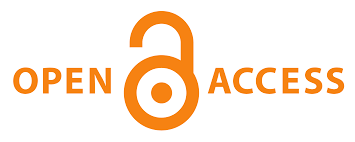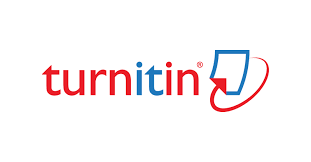The Use of Drill Method to Improve Elementary School Students’ Learning Outcomes in Vocabulary
Main Article Content
Faidah Yusuf
Hikmawati Usman
Muhammad Irfan
This study employs a "quasi-experimental" design to determine whether there is an effect of using drill subjects English in elementary schools in Bajeng, Gowa Regency. The sample consisted of 14 students who were treated with the drill method in the experimental class. Purposive sampling was used in the sampling process. The observation results of the drill method implementation were classified as effective category at the first meeting and very effective category at the second meeting. As a result, the drill method's practical application has cultivated in this study. Therefore, it is possible to conclude that using the drill method has an effect on student learning outcomes in the English subjects at elementary schools.
Al Mulhim, E. N. (2020). Flipped Learning, Self-Regulated Learning and Learning Retention of Students with Internal/External Locus of Control. International Journal of Instruction, 14(1), 827–846. DOI: https://doi.org/10.29333/IJI.2021.14150A
Alghamdi, H. H. (2018). Exploring Second Language Vocabulary Learning in ESL Classes. English Language Teaching, 12(1), 78. DOI: https://doi.org/10.5539/elt.v12n1p78
Ali Haniffa, M., Devi, S., & Binti, A. (2018). The Drill and Practice Application in Teaching Science for Lower Secondary Students. International Journal of Education, Psychology and Counseling, 3(7), 128–164. www.ijepc.com
Aprilani, D. N., & Suryaman, M. (2021). Students’ Perception In Learning English Vocabulary Through Quizlet. JET (Journal of English Teaching), 7(3), 343–353. DOI: https://doi.org/10.33541/jet.v7i3.3064
Avolio, B. J., Reichard, R. J., Hannah, S. T., Walumbwa, F. O., & Chan, A. (2009). A meta-analytic review of leadership impact research: Experimental and quasi-experimental studies. Leadership Quarterly, 20(5), 764–784. DOI: https://doi.org/10.1016/j.leaqua.2009.06.006
Birch, L., Jones, N., Doyle, P. M., Green, P., McLaughlin, A., Champney, C., Williams, D., Gibbon, K., & Taylor, K. (2007). Obstetric skills drills: Evaluation of teaching methods. Nurse Education Today, 27(8), 915–922. DOI: https://doi.org/10.1016/j.nedt.2007.01.006
Brod, G. (2021). Generative Learning: Which Strategies for What Age? Educational Psychology Review, 33(4), 1295–1318. DOI: https://doi.org/10.1007/S10648-020-09571-9
Creswell, J. W. (2014). Research Design Qualitative, Quantitative, and Mixed Method Approaches. SAGE Publication, Inc. DOI: https://doi.org/https://b-ok.asia/book/3700358/d95149
Dewi, N. A. K., Trisnawati, T., & Kristina, M. (2020). The Drill Method with Realistic Approach to Improve Learning Outcomes of Descriptive Statistics in Higher Education. JINoP (Jurnal Inovasi Pembelajaran), 6(2). DOI: https://doi.org/10.22219/jinop.v6i2.13010
Flores, M., Gutiérrez, R., Rocha, F., Valenzuela, P., & Vilches, C. (2021). Improving English Vocavulary Learning Through Kahoot: a Quasi-Experimental High School Experience. Teaching English with Technology, 21(2), 3–13. http://www.tewtjournal.org
Ghalebi, R., Sadighi, F., & Bagheri, M. S. (2021). A study of vocabulary learning strategies among high and low Iranian English vocabulary learners. Cogent Education, 8(1). DOI: https://doi.org/10.1080/2331186X.2020.1834933
Juwitawati, W., & Pratiwi, A. R. (2018). Analysis Students’ Anxiety in Learning Speaking Using Drill Method. Professional Journal of English Education, 1(5), 600–607. DOI: http://dx.doi.org/10.22460/project.v1i5.p600-607
Kani, U. M., & Sa’ad, T. U. (2015). Drill as a Process of Education. In European Journal of Business and Management www.iiste.org ISSN (Vol. 7, Issue 21). Online. www.iiste.org
Karatas, K., & Arpaci, I. (2021). The role of self-directed learning, metacognition, and 21st century skills predicting the readiness for online learning. Contemporary Educational Technology, 13(3). DOI: https://doi.org/10.30935/cedtech/10786
Leavy, P. (2022). Research design: Quantitative, qualitative, mixed methods, arts-based, and community-based participatory research approaches. Guilford Publications.
Makransky, G., & Petersen, G. B. (2021). The Cognitive Affective Model of Immersive Learning (CAMIL): a Theoretical Research-Based Model of Learning in Immersive Virtual Reality. Educational Psychology Review, 33(3), 937–958. DOI: https://doi.org/10.1007/S10648-020-09586-2
Malin, J. R., & Rind, G. M. (2022). Making the case for project‐based learning: An examination of research evidence translation and mobilisation in education. Review of Education, 10(1). DOI: https://doi.org/10.1002/rev3.3330
Nychkalo, N., Wang, J., Lukianova, L., Paziura, N., & Muranova, N. (2020). Use of Task Based Approach in Teaching Vocabulary to Business English Learners at University. Advanced Education, 7(16), 98–103. DOI: https://doi.org/10.20535/2410-8286.215117
Solichin, M. M., Muhlis, A., & Ferdiant, A. G. (2021). Learning motivation as intervening in the influence of social support and self regulated learning on learning outcome. International Journal of Instruction, 14(3), 945–964. DOI: https://doi.org/10.29333/iji.2021.14355a
Troscianko, E. T., Holman, E., & Carney, J. (2022). Quantitative methods for group bibliotherapy research: a pilot study. Wellcome Open Research, 7, 79. DOI: https://doi.org/10.12688/wellcomeopenres.17469.1
Volpe, R., Mulé, C., Briesch, A., Joseph, L., & Burns, M. (2011). A Comparison of Two Flashcard Drill Methods Targeting Word Recognition. Journal of Behavioral Education, 20(2), 117–137. DOI: https://doi.org/10.1007/s10864-011-9124-y




